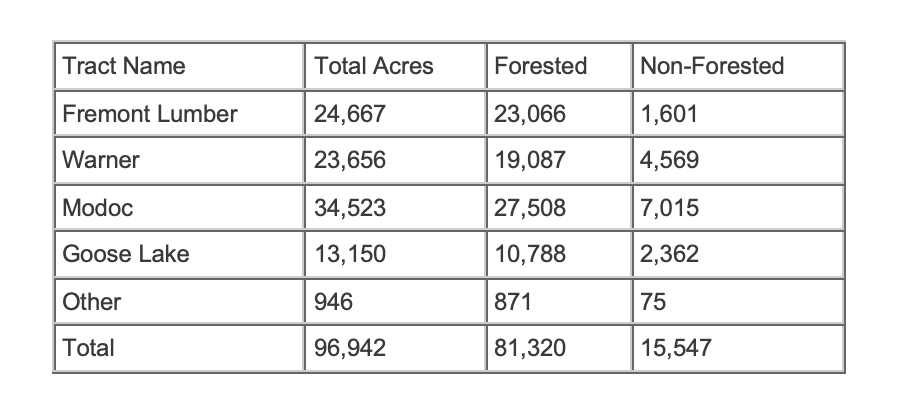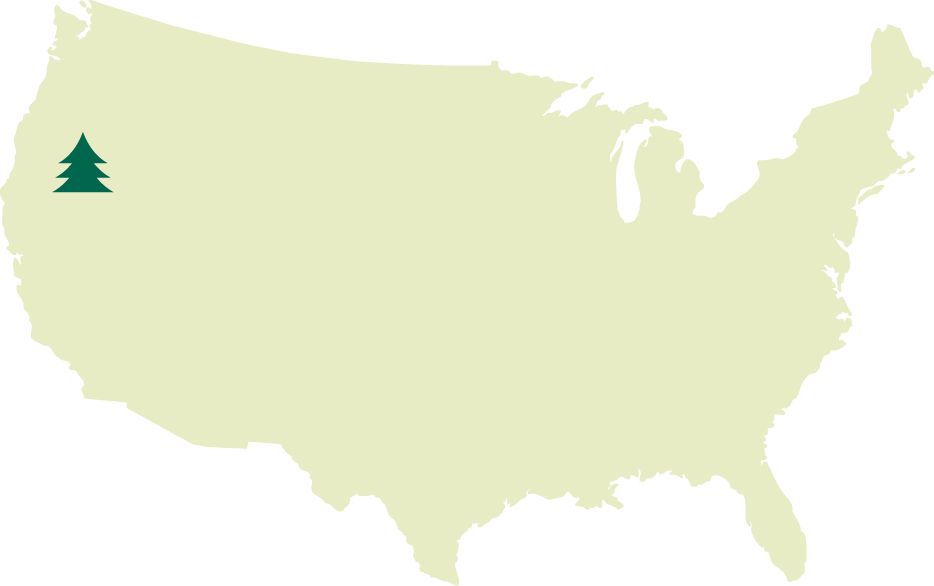The CLF lands are characterized as an eastside pine type. The climate of this type is characterized by a short growing season and minimal summer precipitation. Average annual precipitation is about 16 inches, with much of it falling as winter snow. Diurnal summer temperatures fluctuate widely, with hot days and cold nights. In many areas, frost may occur any night of the year. The months of July, August and September are very dry, with rainfall averaging less than 1/2 inch. Much of this summer rain is ineffective, as it usually comes during brief, high-intensity convection storms. Winter temperatures are generally low; as a result, snow often accumulates to considerable depths.
Logging, bark beetles, root diseases and fire are the major disturbances in the eastside pine type. The understory typical of the specific site increases following disturbance, depending on the nature of the disturbance, season in which it occurred and weather patterns. In general, disturbance favors brush, particularly manzanita and ceanothus. But some kinds of disturbance may eliminate antelope bitterbrush, a desirable deer forage plant that may not be as robust a competitor with trees as are some other shrubs. Open tree stands generally support more vigorous brush or grass understories which may prevent additional tree regeneration for many years. Fire tends to maintain pine stands on sites that will support other conifers. The following understory dominants may be used to identify different eastside pine communities: western juniper, manzanita, several species of ceanothus, big sagebrush, antelope bitterbrush, grass dominance and forb dominance.
The main plant association in this area is the Pinus ponderosa/Purshia tridentata association which has a Purshia dominated shrub layer superimposed on a variety of perennial grasses including Festuca idahoensis, Caespitose agropyron spicatum, Stipa comata and Aristida longiseta. In some stands, forbs such as Balsamorhiza sagittata and Erigeron compositus are abundant.
Eastside pine is moderately slow growing and long-lived. The time required for succession varies greatly depending on site, competition and seed source. The more severe sites within the type impose problems of reproduction and competition, so that stands may not necessarily reproduce themselves after disturbance, being replaced instead by forbs, grasses, brush or junipers.
The soils in this area include areas of immature regosolic soils. These Vitrandepts are developed in deposits of dacitic and rhyolitic pumice erupted from Mount Mazama (Crater Lake) and Newberry Crater, respectively. Thin A horizons have moderate to low organic matter content and grade into relatively un-weathered pumice sand and gravel. A finer texture buried soil is generally encountered at 0.5 to 3 meters.
The predominant commercial species on the lands are ponderosa pine (Pinus ponderosa) and white fir (Abies concolor) with minor amounts of sugar pine (Pinus lambertiana), western white pine (Pinus monticola), lodgepole pine (Pinus contorta) and incense cedar (Calocedrus decurrens). Non-Commercial tree species include aspen (Populus tremuloides) and western juniper (Juniperus occidentalis). Brush species include minor amounts of Klamath plum (Prunus subcordata), snowbrush (Ceanothus velutinus), squawcarpet (Ceanothus prostratus), mountain mahogany (Cercocarpus ledifolus), big sagebrush (Artemisia tridentata) and gray rabbitbrush (Chrysothamnus nauseosus).
The following table is a list of the major tracts of land and an estimate of forested and non-forested acres of each tract:

Approximately 95 percent of the adjacent landownership is federal, with the majority of that being the US Forest Service.
The Modoc tract has suffered from two devastating wildfire over the past ten years. The first, Fletcher fire, consumed over 4,000 acres of timberland. This area has been harvested and replanted. Eight years after the replanting efforts many of the trees are over 14 feet tall.
The other wildfire that has had a substantial impact on the Modoc tract was the 2012 Barry Point fire. This fire alone consumed over 20,000 acres in Modoc County California and over 3,000 in Lake County Oregon. This area has been salvage harvested and now is in the initial stages of a large reforestation effort. This effort will plant upward of four million seedlings on the areas that were burned.


